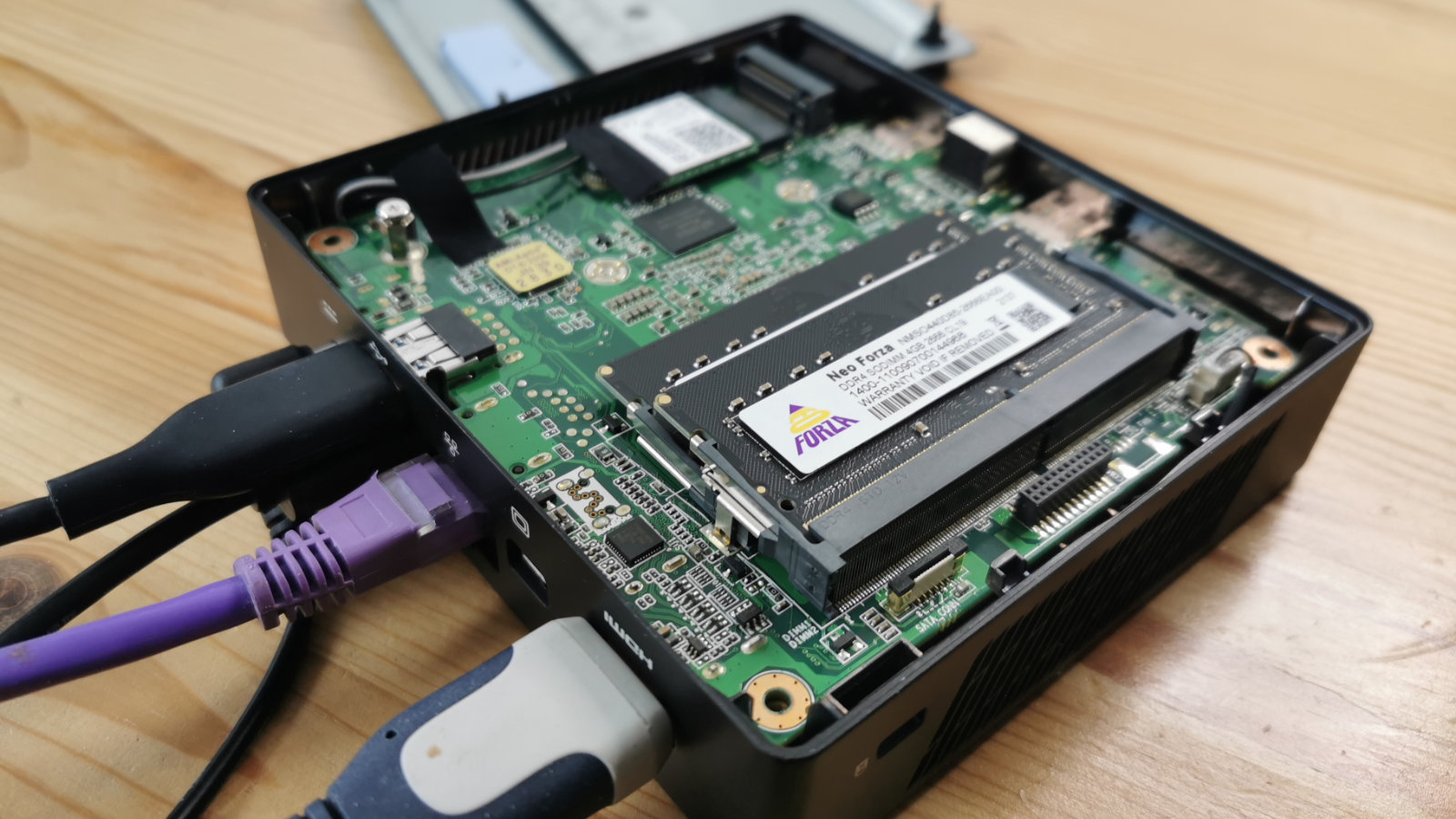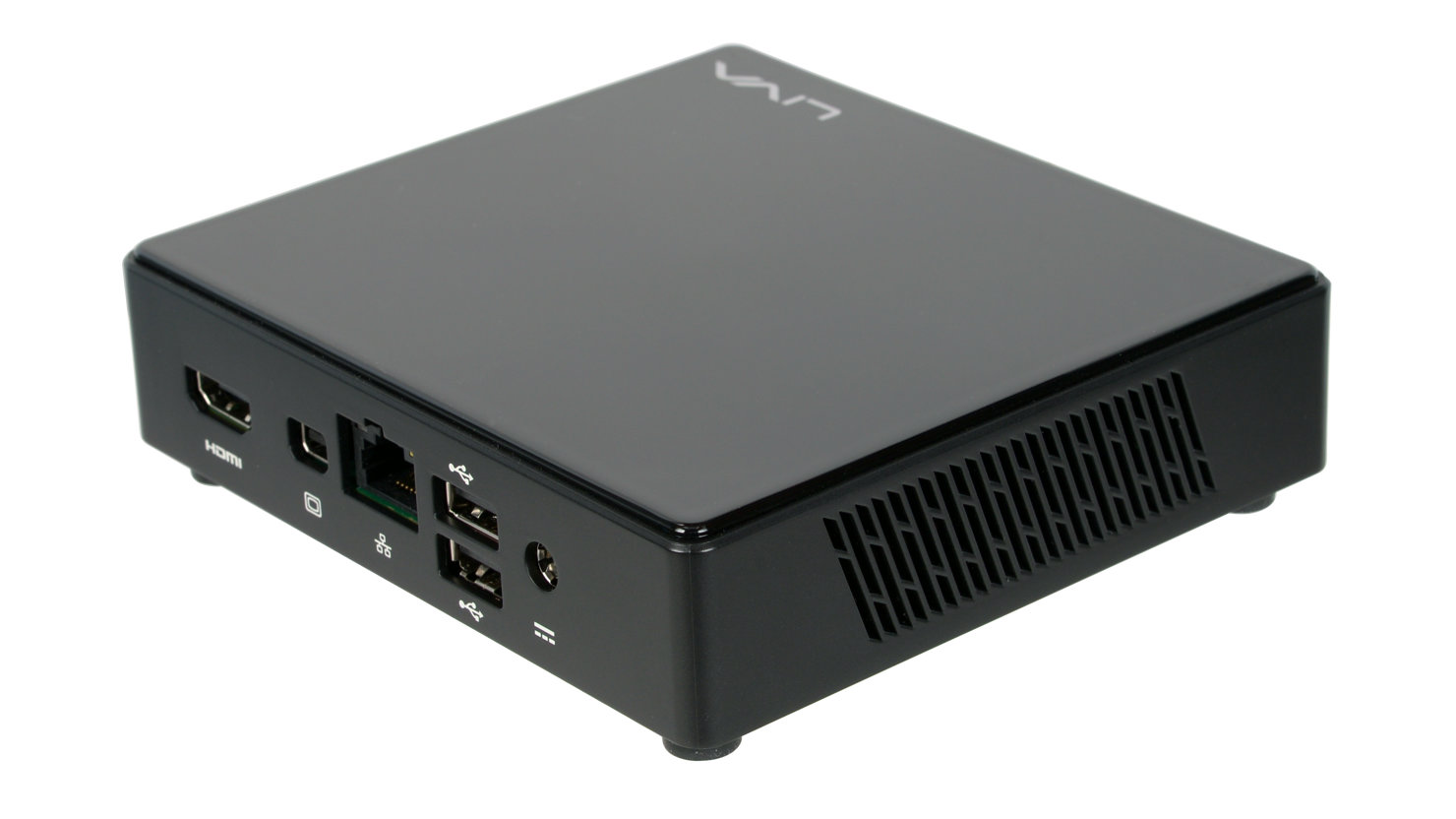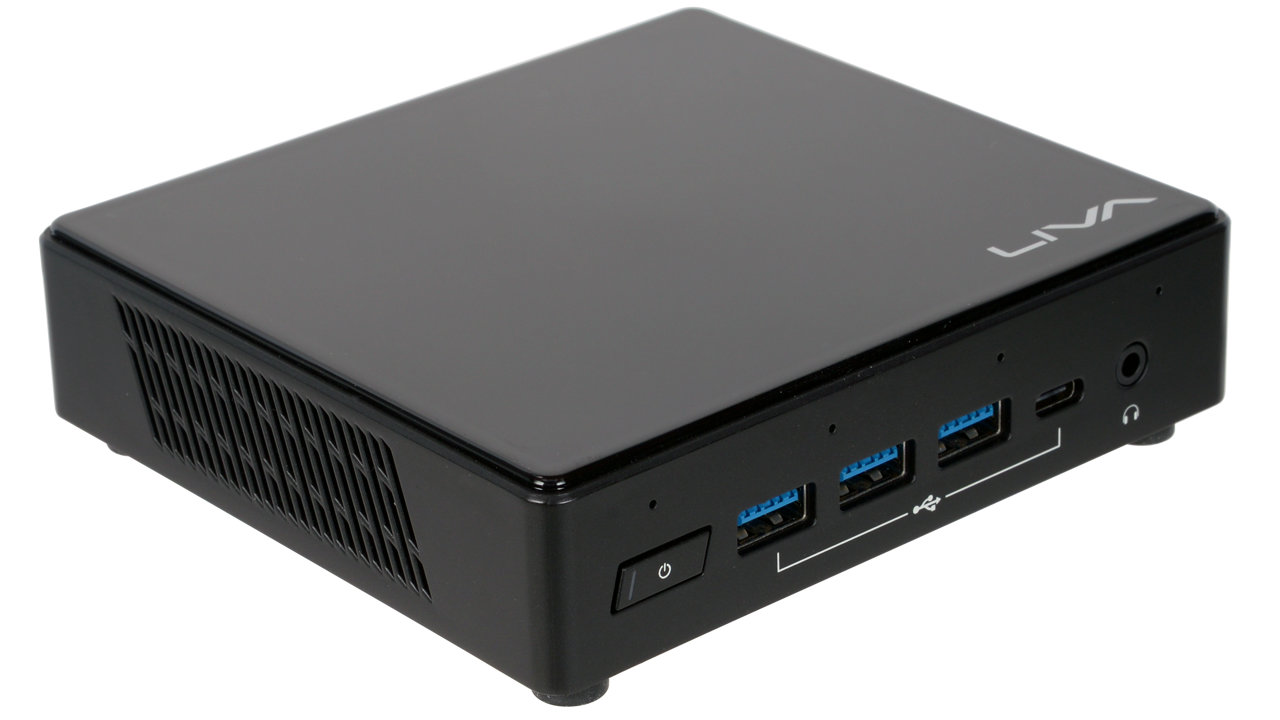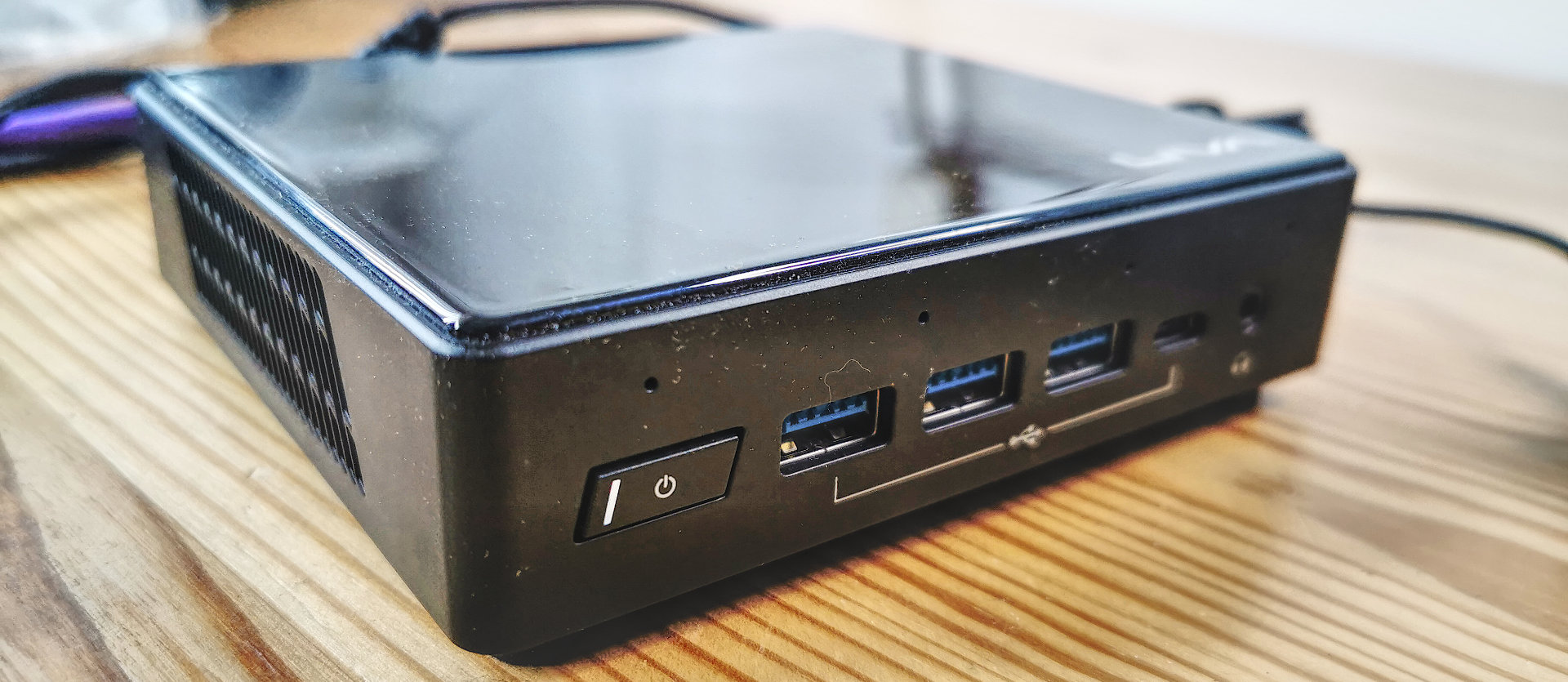Why you can trust TechRadar
In use
The Z3 is a straightforward system to make operational once you supply a monitor, keyboard, and mouse to flesh out this solution.
For those deploying it to a desktop, it looks a bit of a mess with all the cables running into the rear and anything else you decide to connect to the front.
The better option, possibly, is to use the VESA mount and attach it to the rear of a suitable monitor. Our only reservation about this option is that powering it on and using the front-facing USB ports can be inelegant, especially if you have a large monitor.
To make like simpler in this respect, a USB Hub connected via the USB 3.2 Gen 2 port might be a good purchase, enabling the USB ports to be placed in a more accessible location.
We will talk more about performance in the next section, but safe to say this isn’t the quickest PC we’ve ever used.
There are performance issues, even if this machine is an improvement over the Gemini Lake systems that came before it. But, even with these enhancements, this system is only specified for light office work at best.
Though, it has some options that can be used to elevate its abilities a little.
Sign up to the TechRadar Pro newsletter to get all the top news, opinion, features and guidance your business needs to succeed!

Performance
Here's how the ECS EliteGroup LIVA Z3 scored in our suite of benchmark tests:
3DMark Wild Life: 1,480; Fire Strike: 563, Time Spy: 209
Cinebench R23 CPU pts: 512 (single-core); 985 (multi-core)
GeekBench 5: 446 (single-core); 1193 (multi-core), 2236 (OpenCL)
CrystalDiskMark: Sequential Read: 285.1MB/s; Sequential Write: 190.6MB/s
PCMark 10 (Home Test): 2,217points
Windows Experience Index: 5.1
We could dress this up, but the Z3 isn’t a performance monster however you look at it.
There are two limiting factors that hold it back, the first of these being the quad-core CPU that doesn’t have the power budget to use its Turbo mode in any significant way.
Most of the time, the system is running at around 1.1GHz and performs like you might expect a computer with such a low clock to. As you can’t replace the processor on this platform, that is something the owner must live with.
The graphics enhancements in Jasper Lake do enable it to play 4K video streams, but it's close to the limits of what it can do, and we wouldn’t recommend using two 4K screens even if you can connect them using HDMI and Mini DisplayPort.
We ran Fire Strike and Time Spy on our 3DMark tests for completeness, but the frame rate on both was diabolical, often failing to achieve 5 fps. Even Wild Life, a test meant for laptops, is a struggle for this CPU and GPU combination.
But the single worst aspect of the Z3 is the eMMC memory module that operates as the main storage drive. Our CrystalDiskMark benchmarks reveal that this doesn’t equate to half the performance we’d expect from a SATA SSD, never mind an NVMe M.2 drive.

Luckily, as we’ve already mentioned, the Z3 has an M.2 slot, and we’d strongly advise owners to buy a 500GB NVMe drive and clone the system over to that before installing applications and user data. The outlay of around $50 could make the Z3 a less frustrating user experience and transform it to a degree.
We tested a Kingston KC3000 drive, and it managed above 1,700MB/s reads and close to that in writes. That relatively poor result for this drive reveals that the M.2 slot is only two PCIe lanes, not the usual four, but the speed is still seven times faster than the eMMC storage.
Considering that a branded office PC mini-tower design with a Core i5 processor can be had for less money than the Z3 and would perform dramatically better begs questions about how this machine was compromised to make it fanless and so small.

Final verdict
It’s easy to be hard on a system that only has 6W of power to drive its SoC, including the CPU and GPU and all the other hardware.
That said, these are limits that Intel imposed with this SoC silicon, and the NUC passively cooled architecture that surrounds it.
Frankly, unless you have a specific need to convert monitors into easily transportable systems for light office use, there are more cost-effective ways to deliver this functionality.
We can’t deny that the new Jasper Lake chips offer a better experience than the Gemini Lake did. However, the performance even of these new chips isn’t anything amazing, and the product isn’t cheap compared with branded entry-level office systems.
In short, the three Caballeros of performance, scale and thermodynamics met in a bar. There was a fight where no one came out unscathed.
- 1
- 2
Current page: In use, performance and verdict
Prev Page Introduction, price, design and hardwareMark is an expert on 3D printers, drones and phones. He also covers storage, including SSDs, NAS drives and portable hard drives. He started writing in 1986 and has contributed to MicroMart, PC Format, 3D World, among others.

